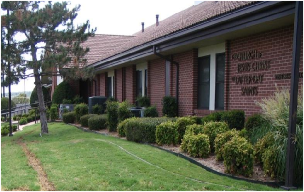The Problem:
Your Building may be at Risk for Lightning Damage
A properly functioning lightning protection system will provide a low impedance path to ground whereby lightning energy can be safely dissipated into the earth without causing loss of life or damage to property.
Improper installation, deterioration, or an inadequate design may compromise the performance of the lightning protection system and put your building at risk for lightning damage.
3 Reasons for Risk
1. Improper Installation
Improper installation of lightning protection system components is the most common issue found by ICP in new construction, renovations, and retrofits, and is the result of:
- Installers not following NFPA, LPI, or UL lightning protection standards.
- Missing, loose, or improperly installed hardware
- Non-compliant hardware
- Lightning cable loops and kinks
- Sub-contractors from other trades compromising the lightning protection installation
- Data and electrical wiring in close proximity to lightning cables
- Severed lightning cables in concealed areas
Case Study: Warehouse Complex (Carrollton, TX)

- Damages of $15,000:
- Computers
- Network Equipment
- Fire Alarm Electronics
- Reasons:
- Lightning protection system between roof levels not connected together
- Grounding systems not bonded
- No power line surge protection
A lightning protection system was added to this facility in 2006 as part of a building renovation. Since the renovation, damage to electronic systems and equipment has occurred. Inspection of the lightning protection system by ICP revealed that circuits on adjacent roof levels were not bonded together as required by national standards. This and other items found during the inspection were corrected, mitigating the danger of future damage. Since the corrections were made, no damage has been reported.
2. Deterioration
Deterioration occurs in existing construction and results from exposure of lightning protection components to the elements, particularly the soil. Since ground rods and other buried components cannot be visually inspected, deterioration can go undetected until the lightning protection system no longer provides protection from lightning strikes.
Case Study: National Weather Service (Fort Worth, TX)

- Damages of $10,000:
- Radio Communication Equipment
- Computers
- Network Equipment
- Reasons:
- Radio tower ground rod deterioration
- Ground rod resistance measurements were 100 times higher than average
- Grounding systems not bonded together
- Rooftop lightning cable connections were loose
A lightning strike in 2009 damaged communication and other electronic equipment at the National Weather Service Forecast Office in Fort Worth, Texas. Inspection of the lightning protection system by ICP revealed that the radio tower ground rods had deteriorated significantly during their 16 year existence. A new grounding system was designed and installed. Another lightning strike occurred less than one year later but this time there was no damage.
3. Inadequate Design
Local site conditions occasionally require modification of standard design and installation approaches for lightning protection systems. Failure to accommodate local site conditions can result in inadequate lightning protection to the structure.
Case Study: Church Building (Sapulpa, OK)

- Damages of $65,000:
- Organ (twice)
- Sound System
- Satellite System
- HVAC Controls
- Computers
- Reasons:
- Lightning ground rods cut off at 3 feet due to bedrock below grade (specifications required 10 feet)
- Electrical grounding system deterioration
- Lightning cable loops and kinks in attic
- Lightning cables installed in HVAC raceways
- Grounding systems not bonded together
This building was built on a hilltop with shallow soil conditions. Two ground rods were installed for the lightning protection system, but they could only be driven a depth of 3 feet below grade due to underlying bedrock. The remainder of the ground rods were cut off and discarded by the installers. This inadequate grounding system was unable to protect the building from lightning strikes. Deterioration of the electrical system ground rods and a lack of system bonding also contributed to the problem. The lightning protection system was re-designed by ICP to include a buried ground ring with multiple grounding electrodes and bonding between electrical, Telco, and satellite system grounds. There have been no reported problems since this new design was installed.
Inspection + Correction = Protection